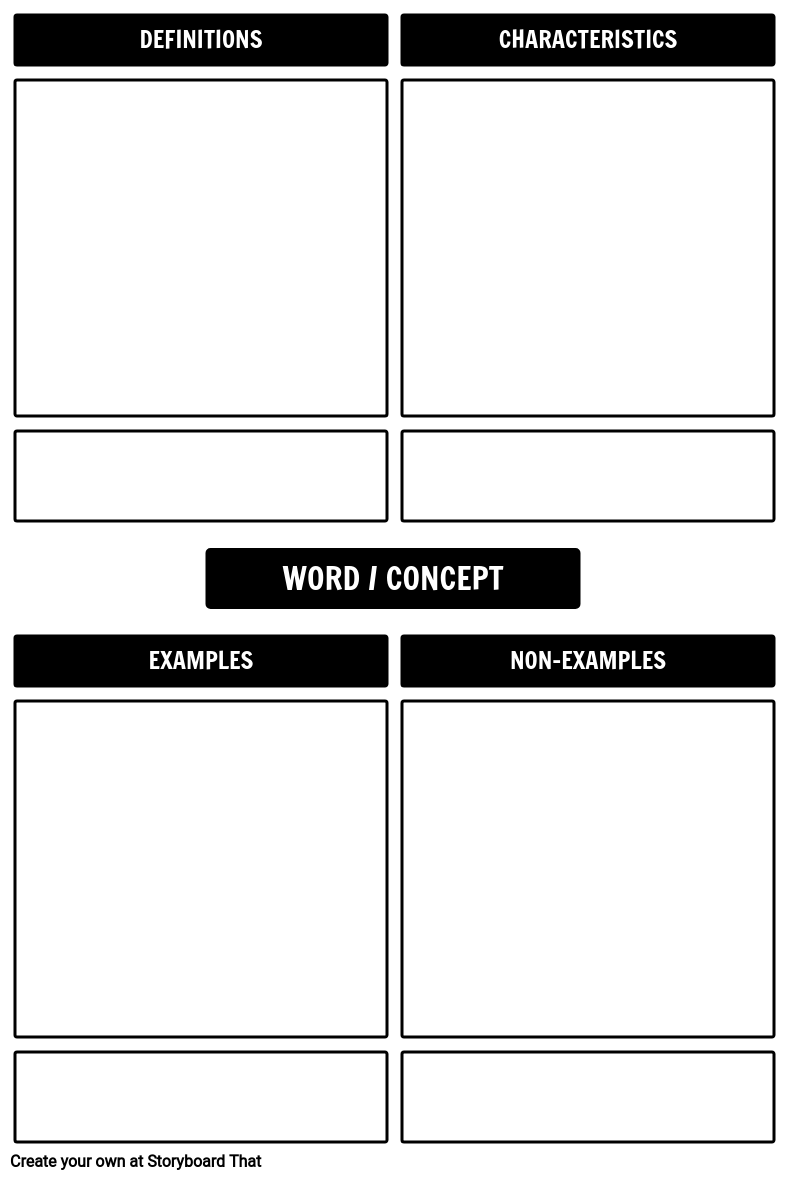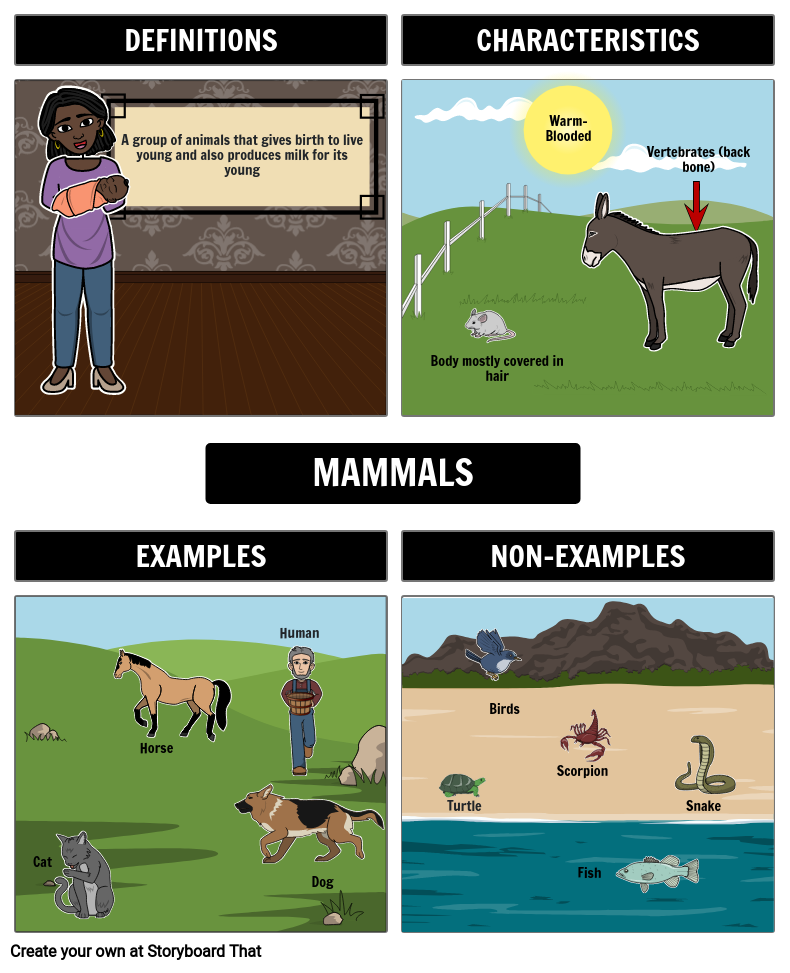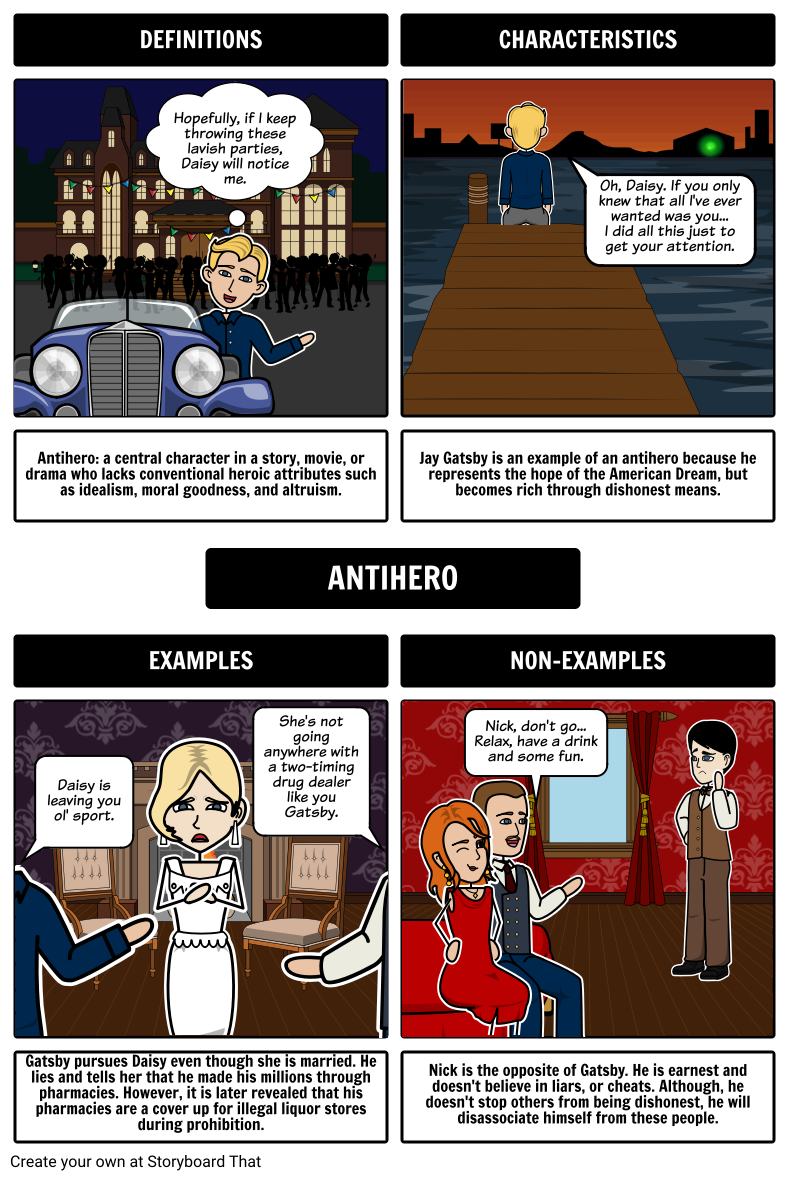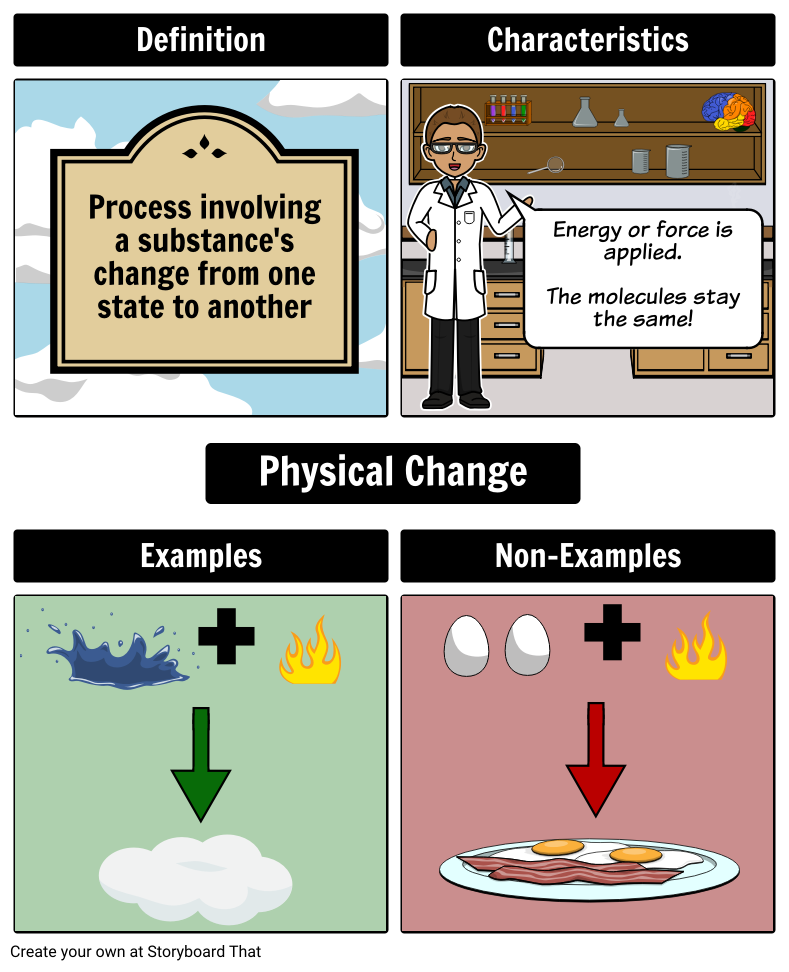What is a Frayer Model?

A Frayer Model is a specific type of graphic organizer. It was originally created in 1969, but with the widespread use of graphic organizers in the classroom, it is still widely used today. Most people are familiar with using this type of organizer for learning vocabulary words, but it can be used for more than that. The Frayer Model graphic organizer is versatile and can be used across various grades and subjects to help students to not only build on vocabulary words, but also to expand their knowledge of various concepts.
Frayer Models Help You:
- Develop Vocabulary
- Separate Concepts into Four Main Ideas
- Showcase Four Examples
Breaking Down the Frayer Model
The Frayer Model is organized so that four boxes or sections surround a general concept or vocabulary word in the center of the organizer. The four boxes surrounding it are labeled Definition, Characteristics, Examples and Non-Examples by default.
| Definition | The “definition” section of the Frayer Model is self-explanatory. In this box the student defines the vocabulary word. If using the model for a concept, this would be where the student would briefly summarize or define the concept. This could vary slightly based on the topic of study. The example model using Mammals as the vocabulary term not only defines it, but also incorporates visuals to demonstrate understanding of definition. |
|---|---|
| Characteristics | The “characteristic” portion of the model is a way to expand upon the definition. This is where students can write and show various characteristics for the word based on the definition. If using the Frayer Model for a concept, the students will demonstrate their knowledge of unique characteristics based on the specific concept. In the “characteristic” section of the model, the definition of the term is built on to further demonstrate knowledge of the term Mammals. |
| Examples | This section is a great way for the students to demonstrate their understanding of the word or concept. To achieve this they can use words and visuals. The best approach is a multi-sensory approach and Storyboard That makes it easy. Students should need little guidance in the "examples" section if they understand the definition and are able to recognize the characteristics. |
| Non-Examples | Sometimes it can be helpful for learners to not only know what something is but also what it is not. Non-examples can make the definition more concrete. As with the “example” section, this box can include visuals and written words. Similar to the “examples” section, the “non-examples” section ideally requires little guidance. The sample Frayer Model shows some of the more common examples of what animals are not mammals. |
Use in the Classroom
The Frayer Model is a beneficial vocabulary graphic organizer for all grades. In the lower grades, depending on the students’ abilities it may be beneficial to complete it as a class, with the teacher leading the discussion. Below are two examples of Frayer Models that might be used in the elementary grades in Math and ELA for vocabulary words or concepts. Some elementary students could make these on their own, while others would benefit from seeing a completed graphic organizer for more in-depth understanding.
Frayer Models are not only great for all grades, but for all subjects. All subjects will have vocabulary or concepts unique to it that students will be required to know, and vocabulary is just the beginning. The default cell layout for the Frayer Model is four cells with the above vocabulary titles. The titles can be changed from the default with a simple click. Additionally, you can easily change the cell layout to cell only, cell and description, or cell, title and description.
While the Frayer Model is most often used for vocabulary building, use this format for anything. The Frayer Model is a useful graphic organizer for brainstorming different characteristics or ideas that surround one topic. The four cells allow for a very targeted approach to brainstorming, which is ideal for students who may get carried away and need to stay focused. This graphic organizer can be used before a project begins, to brainstorm ideas that will shape research, or it can be used after a project to help retain information gathered throughout the process.
Here are a few of the amazing things our teacher authors have come up with. What will you make?
ELA
History
Foreign Language
STEM | |||
|
|
|
|
English Language Arts
Many concepts in English Language Arts are difficult to understand at first. With Frayer Models, you can break down the components of a concept into the traditional parts (Definitions, Characteristics, Examples, and Non-Examples), or you can separate the concept into four major parts.
Example Activities
- Character Analysis
- Literary Element Examples
History
Use the Frayer Model layout for breaking apart arguments in historical documents or specific causes or importance of a historical event.
Example Activities
- Text Analysis
- Significant Events
Foreign Language
Vocabulary is a part of all subjects because there are always new terms for us to learn. Often students are encouraged to get a deep understanding of new words from a list or words that they read in a text very quickly. Use a Frayer Model to help.
Example Activities
- Four-Part Game Boards
- Vocabulary
STEM (Science, Technology, Engineering, and Mathematics)
There are many complicated topics, concepts, and vocabulary in all of the STEM areas that can be parsed out into more digestible chunks. The Frayer Model is particularly useful for struggling students or for a brief review before beginning a related topic.
Example Activities
- Vocabulary
- Math
- Concept Examples
Applications for Special Education
Graphic organizers are great way to modify more complex written assignments for students with special needs. Students can demonstrate their understanding of vocabulary words, concepts, or special events with the use of a Frayer Model.
The added step of a graphic organizer can give some special education students the added structure they need to complete an assignment on their own. Use Frayer Models to give students a boost for an informational report. Whether using the traditional titles for the four boxes, Definition, Characteristics, Examples, and Non-Examples, or using custom titles, such as Who, What, Where, and When, the Frayer Model can set students up for success.
Make Frayer Model Worksheets
If you're looking for another step or an alternative assignment, you can create Frayer Model worksheets to use in your class! These worksheets can be customized and printed out for students to fill out with a pencil, or they can be completed in the Storyboard Creator like a digital worksheet. You can even create multiple versions for those students who might need a little extra help, and keep them on hand for future use! Find plenty of templates to work from or just start with a blank canvas.
Related Activities
Check out these Frayer Model activities from our guides on Introduction to Geometry, Bridge to Terabithia, and Red Kayak.
How to Use the Frayer Model for Concept Mapping
Select the Concept
Choose a specific concept or idea that you want students to explore and understand through concept mapping using the Frayer Model. Ensure that the concept is appropriate for the grade level and aligns with the learning objectives.
Introduce the Frayer Model
Introduce the Frayer Model to students, explaining its purpose as a tool for concept mapping. Highlight that the model helps them organize their thoughts and visually represent the different aspects of the concept.
Complete the Frayer Model
Guide students in completing the Frayer Model graphic organizer for the selected concept. In the center box, have them write the concept or idea. In the surrounding boxes, prompt them to identify and define essential characteristics, provide examples and non-examples, and make connections or associations related to the concept.
Discuss and Share
Facilitate a class discussion where students can share and discuss their completed Frayer Models. Encourage them to explain their choices and rationale for each aspect of the concept. Foster collaboration by allowing students to compare and contrast their Frayer Models, identifying commonalities and differences.
Analyze and Synthesize
Guide students to analyze and synthesize the information presented in the Frayer Models. Encourage them to identify patterns, relationships, or themes that emerge from the different characteristics, examples, and connections. Help them develop a deeper understanding of the concept by examining the various perspectives presented in the models.
Extend and Apply
Extend the concept mapping activity by challenging students to apply their understanding of the concept in new contexts. Encourage them to create additional Frayer Models for related concepts or real-life situations where the concept can be applied. This step helps solidify their understanding and promotes transferability of knowledge.
Frequently Asked Questions about Frayer Models
When is the Frayer model the most applicable teaching tool for learning a particular concept?
This model is most applicable when you want to facilitate a level of synthesis and understanding of a particular topic. Students are able to engage with concepts and build on them from the basic level of the vocabulary related to the concept or topic to the examples, characteristics and definition. They are guided to develop their analytical skills before and after engaging with a topic.
What are some techniques for implementing the use of the model in lessons?
There are a few popular techniques for implementing the use of the Frayer model in classrooms.
- Having students guess the word/main concept based on the hints provided in the model.
- Students can be given half-empty models that they have to fill in from memory of the topic.
- The class can be engaged in a group activity or carousel brainstorming where templates are distributed to the class and each group is given a particular time frame to fill out a portion of the chart. The template is passed around until it is complete, allowing students the opportunity to possibly do presentations on the completed worksheets.
What are the benefits of using the Frayer model?
The Frayer model is effective, and widely used because it is a tool that is simple in its design but useful in its applicability as it allows students the opportunity to activate past knowledge, while linking it to new concepts and simultaneously stimulates critical analysis of the information. It also facilitates retention and recall well, especially for students who are visual learners.
- Constitution of the United States of America (page 4) • The U.S. National Archives • License No known copyright restrictions (http://flickr.com/commons/usage/)
© 2024 - Clever Prototypes, LLC - All rights reserved.
StoryboardThat is a trademark of Clever Prototypes, LLC, and Registered in U.S. Patent and Trademark Office


















